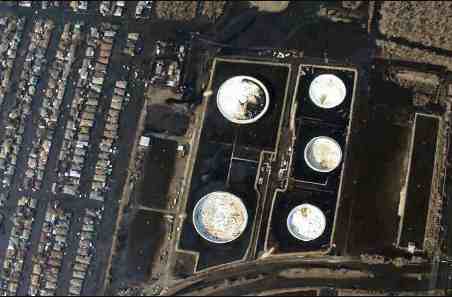Giving away money to those who can afford to carry the burden, and burdening five year-olds taken from their parents, who suffer abuse and neglect isn’t the right way to address our budget problem. It’s unworkable. It’s not humane.
In the defense of legislators and the Governor, we’ve never had a $3.5 billion budget deficit before. Nor have we ever received negative tax revenue under our oil production tax.
It’s time to figure the situation out in a way that doesn’t harm people, harm opportunity for children who can’t carry the load of this deficit. It’s time to address this budget as humanely and responsibly as possible.
And by the way, even if you fired every single Trooper, Child Abuse Investigator, Department of Education Employee, and, well, every state employee, you’d save roughly $1.5 billion and still have a $2 billion deficit. Here’s another fact: despite the rhetoric, while we can find waste to cut, today’s operating budget, on a per capita basis adjusted for inflation is about the same as it was 25 years ago. There’s been some runaway spending and I’ve fought it, but the budget bloat has been exaggerated.
So – the sound bite by some that they can cut their way out of this deficit before our remaining $10 billion in savings disappears – in two years at the current pace – is fake. We should instead extend our savings, and invest wisely. That in part means wise cuts and an end to irresponsible corporate subsidies and policies that cost Alaska vast sums of money.
Here are a few facts for you to consider. If these were your finances, would you do this with your money?
Can We Afford Corporate Welfare with a $3.5 Billion Deficit?
- No Industry Contribution to Our Industry Tourism Marketing Campaign.
Alaska pays 100% of the cost of the state’s tourism marketing campaign, with no contribution at all from the industry it benefits. That was $15.2 million last year, and is proposed at $12.5 million this year. In other states, tourism companies pay taxes (income, business or sales), and contribute towards their states’ tourism marketing campaigns. Can we afford to keep doing this?
- State Pays Roughly $10 million For Free Oil Corporation Use of the North Slope Haul Road.
Alaska pays the full cost of roughly $20 million a year to maintain the Dalton Highway. Approximately half of that cost is for oil industry vehicles who bring equipment and supplies to the North Slope. Oil companies are paying the state less in taxes than we pay them back in deductions and credits (a negative oil production tax). While I wouldn’t want to ask private citizens or small businesses to pay tolls, we cannot afford to fully subsidize oil company business expenses on the Dalton Highway. We’re still researching this, but approximately $10,000,000 a year of this cost is for oil industry use of this road.
- State Losing $500 Million In Next 2 Years – Negative Revenue For Alaska’s New Oil Production Tax.
The latest estimates are that the state’s Oil Production Tax, adopted in 2013, will produce negative revenue over the next 2 years at projected low oil prices. While we will pay out roughly $500 million more under this tax to companies than we receive, Conoco reported handsome Alaska profits of $2 billion last year. The 2013 law has a so-called 4% “minimum tax.” But a minimum tax that gets you negative $500 million in revenue is, well, misnamed at best.
- $150 million In Ill-Considered Refinery Subsidies For Two Companies That Presented No Evidence They Needed It, and For One Company That Didn’t Ask For It.
Last year a poorly considered five-year, $30 million/year subsidy was given to three private oil refineries, including two owned by Fortune 500 Corporation Arctic Slope Regional Corporation, and one company, Tesoro, that said it didn’t need the subsidy. One of the two Petro Star refineries offered no evidence they needed the subsidy at all, or how not receiving the subsidy would keep it from staying in business.
The original bill, HB 287, simply renewed Tesoro’s right to buy and refine state royalty oil. It was hijacked in the last weeks of session with little testimony. Tesoro never asked for the $10 million/year subsidy, and never said they needed it to stay in business. Another refinery, Petro Star near Fairbanks, testified they were losing roughly $1 million a year. So they got $10,000,000 a year for the next five years. They asked, they demonstrated no need, and they received. https://www.adn.com/article/20140414/house-panel-trims-proposed-state-refinery-subsidies-150-million; https://www.adn.com/article/20140417/house-backs-refinery-subsidies-supporters-warn-hardships; https://www.360north.org/2014/04/16/legislature-considers-150m-help-oil-refineries/. It was like buying a solid gold square block to try to put through one of those round holes in a pre-schooler’s toy.
Former Rep. Alan Austerman (R-Kodiak) and I recommended avoiding this flat, fat subsidy (which will cost $150 million over the next 5 years), and instead proposed generous low interest loans with a five year interest payment grace period, that the state could help subsidize at a much lower cost. Companies that needed it would take the loan. Companies that have no business plan to turn their losses around, or who don’t need it (Tesoro admitted they didn’t), won’t.
So – what do just these examples, totaling $550 million in corporate welfare problem get you? For one, an unintentional excuse to say the state cannot afford to better protect children, and stop child abuse and neglect. I guess that the Governor Parnell-commissioned study on how to prevent child abuse and neglect might sit on a shelf this year.
Child Abuse and Neglect: Children Asked To Let Things Get Worse For Them
Today we send roughly 24% of our foster youth to jail; and 20% end up homeless after leaving foster care. That costs money. Forthright testimony (below) from the Director of the Office of Children’s Services is sobering. Forty percent of foster youth end up homeless if you count those who couch surf because they have no home of their own. These are children who will go to jail in higher numbers, need state welfare in higher numbers, and cost us in public defenders, prosecutors, and jails when we should be saving money by steering them towards treatment, stable homes, and workplace success. That is, we’ll spend more to do the wrong thing.
In 2011 the Parnell Administration commissioned a study on how to protect our foster youth from child abuse, neglect, and failure. Unfortunately, giving away $550 million/year in the midst of a major budget deficit gets you unintentional, but continued institutional child abuse and neglect. And it prevents us from helping foster youth complete school, get job training, complete college, and receive treatment and help to prevent them from becoming homeless.
The study showed the state foster care system was, surprise, running on a vast shortage of Band-Aided resources, and failing these neglected and abused youth. Since the study was formally released in 2012, foster youth numbers have spiked from roughly 1,800 to 2,400, making the study showing inadequate resources an understatement. So, what are the results of failing to address this report, and letting the situation get more out of hand than it was in 2011?
Here’s what Office of Children’s Services Director Christy Lawton honestly relayed to the House Finance Committee. In her February 5, 2015 testimony to the House Health and Social Services Budget Subcommittee testimony, she laid out the problems we were causing for our foster youth, and the probability that we were increasing abuse and neglect.
Asked about the nationally recognized standard that we visit youth and their foster parents every 30 days to assess their needs, and address their problems, which involves looking for signs of abuse and neglect Lawton testified:
Rep. Gara: if you don’t visit every 30 days, sometimes you’ll miss abuse signs or maltreatment signs, is that fair to say?
Lawton: It’s very fair to say, and the research shows the correlation between regular consistent meaningful caseworker visits and the parents’ ability to successfully get their children back go hand-in-hand.
Asked if the 2011 “Workload Study” which recommended the hiring of roughly 50 staff so caseworkers could protect children, and work towards steering them to success understated the problem (we hired 13 of these recommended 50 staff last year) still painted an accurate picture of the needed solution, Lawton testified as follows:
Rep. Gara: One of the problems is when they recommended the hiring of the roughly 44 back in 2011, our foster youth caseload was somewhere in the 1800 range and now it’s up to over 2300, so whatever shortage we had back then is much greater now, would that be fair to say?
Lawton: Certainly the number of kids in care has grown since that study was completed, so the workload has grown, and the need for people to do the work has grown, yes.
National standards also say caseworkers can safely handle caseloads of no more than 12 families. Our caseworkers in Wasilla and Anchorage have caseloads that are 70% higher. Caseworkers simply can’t do their jobs to protect these 2,300 neglected and abused youth who’ve been taken from their parents, and bounce between foster homes, causing more damage.
Here’s what Lawton said:
Rep. Gara: On increased workloads, there’s a national standard on what the workload should be, can you tell folks what it is (caseload)?
Lawton: The last time I remember looking at it, the average was supposed to be about 12 families per caseworker.
Rep. Gara: In the Mat-Su region and in Anchorage, where are you in terms of caseloads?
Lawton: For caseloads and we’re talking about people we’re serving in foster care, and we’re talking about families, the average would probably be about 20 families per worker.
Rep. Gara: And, with the current caseload that you have are you able to meet the standard of meeting with the families every 30 days?
Lawton: In most cases, no
Rep. Gara: If you don’t visit every 30 days, sometimes you’ll miss abuse signs or maltreatment signs, is that fair to say?
Lawton: It’s very fair to say, and the research shows the correlation between regular consistent meaningful caseworker visits and the parents’ ability to successfully get their children back go hand-in-hand.
. . . .
And, this failure impacts our ability to steer youth towards success in school, and the workplace.
Rep. Gara: Can you explain to the committee, in addition to those other problems of having a shortage of caseworkers, what other impacts it has that are negative in terms of our ability to transition youth to success and protect them?
Lawton: Workload affects everything that we do, in terms of our ability to meet the safety [inaudible] well-being needs of our kids and our youth. Certainly particularly with our youth, our ability to help them get independent living skills, help them with getting into education, if they’re going to exit care and move onto adulthood, the time that is focused there is often insufficient, at best, to meet their needs, so it is an area of—it needs a lot of work.
There you have it.
Just this example of a portion of the $550 million in corporate subsidies Alaska gives away: 1) increases our budget deficit; 2) will speed our run through our savings; 2) and detracts from our ability to make minor investments to protect abused and neglected youth, who we let bounce between 5, 10 and 15 foster homes, and then into jail at a 24% clip.
In the long term that hits our budget way harder than working to get these youth into the workforce, and away from welfare and criminal and homelessness costs. And it compromises our humanity.
As always, let me, or my aides Joe and Molly know if we can help, or if you have any questions.
My Best,
Les Gara





